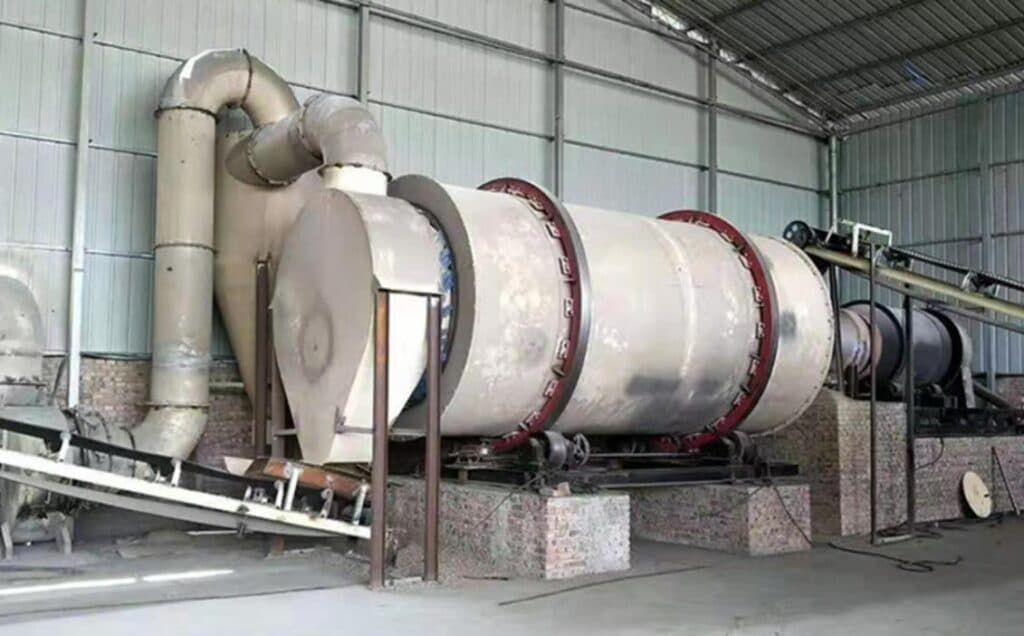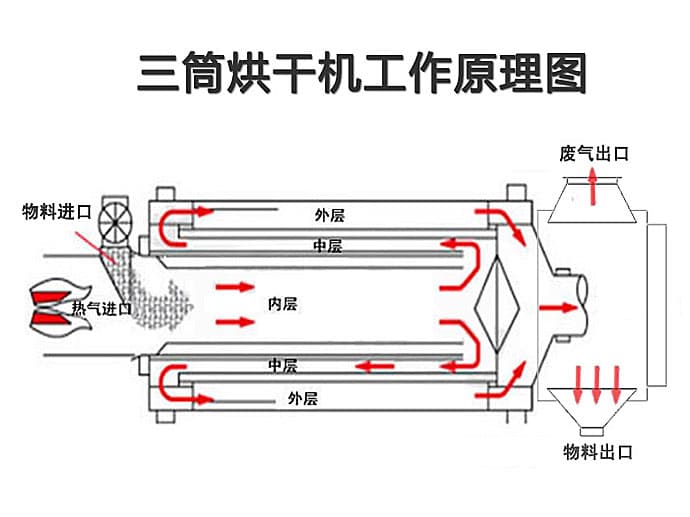7 Essential Tips for Efficient 3-Pass Rotary Dryer Maintenance and Operation

Introduction:
In the world of industrial drying solutions, the 3-pass sand dryer stands out as a game-changer. This advanced technology offers a highly efficient and cost-effective method for drying sand, making it ideal for various applications, from construction to foundries. As industries strive for greater efficiency and sustainability, understanding the advantages and operational principles of the 3-pass sand dryer is crucial. In this guide, we’ll explore how this innovative equipment works, its benefits, and why it might be the perfect addition to your drying processes.
What is a three 3 pass sand rotary dryers 2024
3 pass rotary dryers also known as 3 cylinder rotary dryers, as the name suggests, sand dryers are specialized equipment designed for drying sand. These machines come in various models and specifications to meet different production needs. The drying capacity and energy consumption vary between models, with energy efficiency being a critical factor. Generally, we evaluate sand dryers based on the energy consumed per unit of sand dried. Given the relatively high power consumption of sand dryers, reducing electricity bills is a common concern.
Key Improvements in Sand Dryer Efficiency
To address the power consumption issue in sand dryers, several modifications have been implemented. These enhancements aim to optimize heat exchange and reduce energy loss. Below are the main improvements:

Central X-Shaped Lifting Plates:
Adding central X-shaped lifting plates inside of the rotary drum helps minimize hot voids, extends the residence time of materials, improves heat exchange efficiency, and reduces high-temperature gas loss. Typically, 3-5 groups of lifting plates are installed starting from the middle of the dryer towards the head end, with intervals of 0.5-1m. Each group contains six X-shaped lifting plates. These should not be installed within 3m of the machine head due to the high moisture and viscosity of newly added material, which could otherwise impair overall drying efficiency.
Triangular Ribs for Feed End:
Replacing spiral conveyor blades at the feed end with triangular ribs, made from 6mm thick steel plates, can significantly improve efficiency. These ribs, welded firmly to the drying plate and inner cylinder, slow down material flow in the high-temperature zone, enhancing heat absorption and exchange rates while reducing the temperature at the dryer’s front end, preventing damage to the cylinder and retaining ring.
Feed Pipe Angle Adjustment:
Adjusting the feed pipe angle to raise the lower barrel as much as possible (without affecting the feed) helps control the blanking point within 200mm from the retaining ring. This modification facilitates the circulation of high-temperature gases and prevents chute burnout, allowing materials to fall naturally, forming a material curtain for direct contact with hot gases, thereby improving heat exchange efficiency.
L-Shaped Lifting Plates:
Installing L-shaped lifting plates in the low-temperature drying belt at about 1/3 of the cylinder’s length enhances the drying process. These plates, fixed at different angles (30°, 90°, and 120°), create a large lifting distribution area and improve heat exchange rates. Proper ventilation and exhaust gas temperature control are crucial. If exhaust gas temperature exceeds 100°C, additional X-shaped central lifting plates can be installed. Conversely, fewer plates should be used if the temperature is below 70°C to prevent excessive energy consumption or dust bag damage.
Flow Rate and Quality Control:
Controlling the flow rate of drying materials is essential for maintaining quality. Several X-shaped central lifting plates can be installed, but considerations for ventilation and exhaust gas temperature are necessary. In some cases, the number and position of the retaining ring should be adjusted to prevent wear on the inner cylinder. Using wear-resistant materials or thickening steel plates in high-wear areas can mitigate this issue.
- By implementing these modifications, the efficiency and performance of 3 pass sand dryers can be significantly enhanced. These improvements not only optimize the drying process but also contribute to energy savings, making sand dryers more economical and environmentally friendly.
Sand Dryer Maintenance: Ensuring Longevity and Efficiency
With the increasing demand for dry sand in the construction industry, the machinery industry has developed advanced sand dryers to meet this need. The three-pass sand dryer, in particular, represents a significant technological advancement in the field. As more people invest in these dryers, ensuring the durability and efficiency of the equipment becomes crucial. Here, we will discuss essential maintenance tips for sand dryers to help extend their service life.
Key Maintenance Tips for Three-Pass Sand Dryers
After installing a sand dryer, each component must be thoroughly inspected. Begin by reading the product manual to familiarize yourself with each part. Once the equipment is operating normally, follow these maintenance steps:
Sand dryer Initial Lubrication:
- Apply grease lubrication once a week initially, then switch to every two weeks.
Component Checks:
- Regularly check for loose screws and belts to prevent operational issues.
Gear Oil Maintenance:
- Change the gear oil in the main engine, reducer, bucket lift, and disc feeder every two weeks initially, then switch to once a month. After that, perform oil changes every three months.
- For the gearbox reducer, use No. 220 heavy-duty gear oil.
- For the cycloid reducer, use No. 40-60 gasoline engine oil.
- For the Elephant brand reducer, use No. 68 thick gear oil in summer and No. 18 thin gear oil in winter.
Vibration Motor Care:
- Add lubrication grease to the vibration motor every two weeks initially.
Vibration Motor Inspection:
- Check the vibration motor for looseness and tighten it once a week.
Lubrication Checks:
Regularly inspect all lubricating parts and replenish oil as needed.
Post-Installation Tightening:
- After three working days, tighten all bolts and check the motor belt and belt conveyor.
Gear Oil Replacement Schedule:
- Replace the reducer’s gear oil after the first 15 working days, then after three months.
Electrical Component Inspection:
- After each shift, check all electrical appliances (cabinets) and cable pipelines for any looseness.
Transmission Part Lubrication:
- Apply butter to the main engine’s transmission parts every 15 working days.
Gas Alarm Device Maintenance:
- Regularly inspect the gas alarm sensor and keep it clean.
Cyclone and Dust Collector Cleaning:
- Clean the cyclone and water curtain dust collector after each production cycle to ensure optimal operation.
Customizing Maintenance Schedules:
These maintenance guidelines can be adjusted based on the specific usage of your sand dryer. Keeping all parts clean and well-maintained is crucial for the longevity and efficiency of the equipment. For further inquiries or detailed information, please feel free to contact us at any time.
Conclusion
Embracing the 3-pass sand dryer can significantly enhance your drying operations, offering superior efficiency, reduced energy consumption, and improved product quality. As industries continue to evolve, adopting such advanced technologies is essential for staying competitive and sustainable. Whether you’re looking to upgrade your current system or implement a new drying solution, the 3-pass sand dryer provides a reliable and effective option. Invest in this technology today and experience the transformative benefits it brings to your industrial drying processes.

